Lafayette, Louisiana, Hgh State Clinic, Hgh Injections, Hrt Doctors
Lafayette, Louisiana Blood Testing Facilities
 Represents a LabCorp blood testing facility
Represents a LabCorp blood testing facility Represents a Quest Diagnostics blood testing facility
Represents a Quest Diagnostics blood testing facility

Nearby Labcorp Blood Testing facilities:
- Labcorp Center Distance: 2 m, 217 La Rue France, Lafayette, Lafayette Parish, LA, 70508
- Labcorp Center Distance: 5 m, 4906 Ambassador Caffery C-1, Lafayette, Lafayette Parish, LA, 70508
- Labcorp Center Distance: 20 m, 1000 Parkview Drive Suite 24, New Iberia, Iberia Parish, LA, 70560
- Labcorp Center Distance: 42 m, 1501 Hospital Ave, Franklin, St Mary Parish, LA, 70538
- Labcorp Center Distance: 55 m, 7922 Summa Ave. Ste. A-2, Baton Rouge, East Baton Rouge Parish, LA, 70809
- Labcorp Center Distance: 58 m, 11441 Industriplex Blvd Ste 140, Baton Rouge, East Baton Rouge Parish, LA, 70809
- Labcorp Center Distance: 65 m, 1124 S. Burnside Rd A-100, Gonzales, Ascension Parish, LA, 70737
- Labcorp Center Distance: 73 m, 4407 Nelson Rd, Lake Charles, Calcasieu Parish, LA, 70605
- Labcorp Center Distance: 89 m, 826 School Street, Houma, Terrebonne Parish, LA, 70360
- Labcorp Center Distance: 94 m, 1109 C M Fagan Drive Suite J, Hammond, Tangipahoa Parish, LA, 70403
Nearby Quest Blood Testing facilities:
- Quest Center Distance: 5 m, 5000 Ambassador Caffery, Lafayette, Lafayette Parish, LA, 70508-6984
- Quest Center Distance: 55 m, 7731 Perkins Road, Baton Rouge, East Baton Rouge Parish, LA, 70810-1080
- Quest Center Distance: 86 m, 1826 Martin Luther King Blvd, Houma, Terrebonne Parish, LA, 70360-2499
- Quest Center Distance: 90 m, 501 Rue De Sante, La Place, St John the Baptist Parish, LA, 70068-5404
- Quest Center Distance: 93 m, 1445 South Morrison Boulevard, Hammond, Tangipahoa Parish, LA, 70403-5705
Louisiana Hormone Replacement Therapy Services
Are you 30 years or older and interested in the potential benefits that Hormone Optimization can offer to your life? Well, look no further! The Conscious Evolution Institute is one of the nation's premier providers of Quality HRT Services, and we are pleased to inform you that we serve all corners of Louisiana, from New Orleans to Shreveport!
By just giving us a call or filling out the form on our website, we can start you off on the path toward a new, revitalized, and optimized life!
Louisiana Low-T Treatments
Testosterone Deficiency is the most talked about form of Male Hormone Deficiency today, but most men still don't have a clear understanding of the impact that Low-T can have on a man's life. Everyone understands that Testosterone facilitates sexual activity, but far fewer people understand the long-term implications of Andropause (the clinical name for Age-Related Testosterone Deficiency).
Testosterone helps sustain the male body in peak shape and condition, and once Testosterone starts to lose its influence on the body, a number of symptoms can begin to manifest, including weight gain, anxiety, weakening muscles, increased cholesterol and triglycerides, slow metabolism, low libido, and sexual dysfunction.
The good news is that Testosterone Deficiency can be effectively treated with Testosterone Replacement Therapy! The Conscious Evolution Institute offers a number of forms of therapy, including Testosterone Topical Gels, Testosterone Injections, and Testosterone Patches.
Louisiana HGH Deficiency Treatments
Another form of Hormone Deficiency that effects both men and women is known as Age-Related HGH Deficiency (also known as somatopause). Human Growth Hormone is one of the most important hormones released by the human body, and after puberty, its primary purpose is to sustain optimal cellular metabolism.
So that means that HGH keeps us in peak condition. But around the age of thirty, our HGH Levels start to fade, which has a tremendous impact on our physiological condition over time. Growth Hormone Production drops at around 1-2% each year, at first unnoticeable, but eventually, undeniable.
Symptoms of HGH Deficiency include unhealthy changes in body composition, fatigue, loss of exercise capacity, depression, mood swings, memory and cognitive issues, reduced resistance to illness, and increased healing time from injury. Luckily, there are effective treatments for HGH Deficiency. The Conscious Evolution Institute offers both Sermorelin Acetate Therapy and HGH Injection Therapy, both are clinically proven to restore optimal Hormone Balance.
Louisiana HCG Injections
We also offer highly effective weight loss treatments, including HCG Weight Loss Therapy. Bio-Identical HCG is a medical treatment which has the ability to vastly improve the odds that your weight loss efforts are met with success.
When injected, HCG has a very unique effect upon the body. It encourages weight loss in three ways: It suppresses the sensation of hunger associated with a low-calorie diet, it directs the body to burn adipose fat tissue, and fat metabolism prevents the patient from struggling with fatigue.
If you are interested in HCG Therapy, we can help you lose 5 or more pounds each and every week!
Major Cities in Louisiana
New Orleans
New Orleans is one of the most important port cities in the United States, as well as one of the jewels of American cultural significance. New Orleans is also the most populous city in Louisiana, lying where the Mississippi River officially meets the ocean. New Orleans is referred to by many nicknames, including NOLA, The Big Easy, and The Crescent City.
The city is home to Tulane University, and also has a strong presence in pro sports, home of the New Orleans Saints and the Pelicans. The most famous location in New Orleans is undoubtedly Bourbon Street, where people come from all over the country to experience the non-stop party that the street represents. The biggest festival in New Orleans is Mardi Gras, the celebration of humanity that occurs in the week before lent.
Baton Rouge
Baton Rouge is the second most populous city in Louisiana, and is the capital of the state. Louisiana State University is also located in Baton Rouge, and the LSU Tigers are one of the most prominent college football teams in the nation. Baton Rouge goes by the nicknames The Capital City and the Red Stick.
The Baton Rouge economy revolves around a small number a powerful industries, including medical research and petrochemical research, manufacture, and production,. The largest employers of Baton Rouge are LSU, the public school system, Turner Industries, and the State of Louisiana. The oil industry is a strong sector of the Baton Rouge economy as well, and there is an ExxonMobil refinery located in the city, the second largest in the entire United States.
Shreveport
Shreveport is located in the northwestern portion of Louisiana, along the Red River. Shreveport is the third most populous city in Louisiana. Shreveport's nicknames include Shreve and Port City. Barksdale Air Force Base is also located just outside of the city, and is the largest employer of the city outside of the state itself.
Shreveport is known for its casinos and gaming, and is home to a number of Riverboat Casinos. Casinos in the area include Diamond Jacks Casino, Boomtown Casino, Horseshoe Casino, and Eldorado Casino. The city also has an entertainment and shopping complex known as the Louisiana Boardwalk.
Metairie
Metairie is the fourth most populous area of the state, but it is actually not a city, because it is not incorporated. In spite of that, it is a large and historically significant place. Metairie is located on the shore of Lake Pontchartrain, and is immediately to the northwest of New Orleans. Like New Orleans, Metairie also has a huge Mardi Gras celebration, but it bills itself as a more family-oriented experience, as opposed to the raucous New Orleans celebration.
Lafayette
Lafayette is located in the center of Louisiana, and is the fourth most populous city in the state, since Metairie is not a city. Lafayette was originally named Vermillionville when it was founded in 1821, but was renamed in 1884. Lafayette is also the heart of an area known as Acadiana, which is the home of the Creole culture in the United States.
The city is also the home of the University of Louisiana-Lafayette. The economy of the city centers on Information Technology and Manufacturing, and companies in the area include Presidio Networked Solutions, the Center for Business and Information Technologies, and CIS Hammers.
All About Lafayette, Louisiana Geographic Area
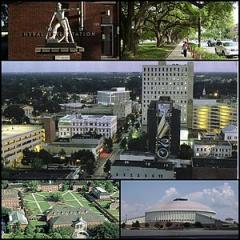
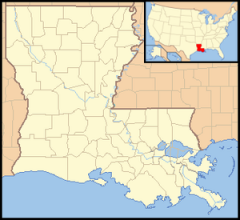
Lafayette (/lÉaËafaɪËnÉot/; French: [lafajÉot]) is a city in and the parish seat of Lafayette Parish, Louisiana, United States, on the Vermilion River. The population was 120,623 at the 2010 census. It is the fourth-largest incorporated city in the state, and is the larger principal city of the Lafayette aeAcadiana combined statistical area, which, in 2011, had an estimated total population of 554,517.
It was founded as Vermilionville in 1821 by a French-speaking Acadian named Jean Mouton. In 1884, it was renamed for General Gilbert du Motier, marquis de Lafayette, a French military hero who fought with and significantly aided the American Army during the American Revolutionary War. The city's economy was primarily based on agriculture until the 1940s, when the petroleum and natural gas industries became dominant. In recent years, the medical profession has taken a more predominant role in the area economy.
Lafayette is the center of Cajun culture in Louisiana and the United States. The city has a strong tourism industry because of that culture there and in the surrounding region. There is also a Creole influence in the area as well, although most Creoles and descendents of such originate to the east in New Orleans. The Creole and Cajun cuisines are among the most famous regional cuisines of the United States.
This city should not be confused with the former city of Lafayette in Jefferson Parish, Louisiana That city was absorbed into New Orleans in 1852.
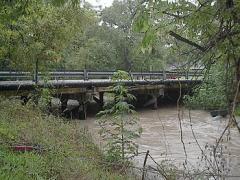
Lafayette is located at 30 °13 a²N 92 °2 a²W / 30.217 °N 92.033 °W / 30.217; -92.033 (30.2139, -92.0294) and has an elevation of 36 feet (11.0 m).
According to the United States Census Bureau, the city has a total area of 49.2 square miles (127 km2), of which 49.1 square miles (127 km2) is land and 0.1 square miles (0.26 km2) (0.19%) is water.
Lafayette is located on the West Gulf Coastal Plain. What is now Lafayette was part of the seabed during the earlier Quaternary Period. During this time, the Mississippi River cut a 325-foot-deep (99 m) valley between what is now Lafayette and Baton Rouge. This valley was filled and is now the Atchafalaya Basin. Lafayette is located on the western rim of this valley. This land, called the southwestern Louisiana Prairie Terrace, is higher up and not made of wetland like much of the surrounding areas to the south and west of Lafayette. Because of this, Lafayette does not suffer significant flooding problems.
The Vermilion River runs through the center of Lafayette. Other significant waterways in the city are Isaac Verot Coulee, Coulee Mine, Coulee des Poches and Coulee Ile des Cannes, which are natural drainage canals that lead to the Vermilion River.
Lafayette's climate is described as humid subtropical using Koppen climate classification. Lafayette is typical of areas along the Gulf of Mexico in that it has hot, humid summers and mild winters. (See table below for average temperatures for Lafayette.)
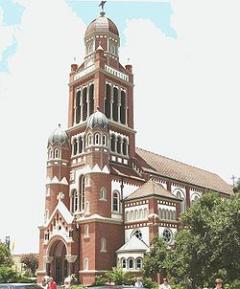
As of the census of 2010, there were 120,623 people, 43,506 households, and 27,104 families residing in the city. The population density was 2,316.7 people per square mile (894.5/km ²). There were 46,865 housing units at an average density of 984.7 per square mile (380.2/km ²). The racial makeup of the city was 68.23% White, 28.51% African American, 0.25% Native American, 1.44% Asian, 0.02% Pacific Islander, 0.58% from other races, and 0.97% from two or more races. Hispanic or Latino of any race were 7.88% of the population. In 2010, 84.2% of the population over the age of five spoke English at home, and 11.5% of the population spoke French or Cajun.
There were 43,506 households out of which 31.3% had children under the age of 18 living with them, 43.9% were married couples living together, 14.6% had a female householder with no husband present, and 37.7% were non-families. Nearly 29.4% of all households were made up of individuals, and 8.0% had someone living alone who was 65 years of age or older. The average household size was 2.43 and the average family size was 3.07.
In the city the population was spread out with 25.1% under the age of 18, 13.3% from 18 to 24, 29.5% from 25 to 44, 20.9% from 45 to 64, and 11.2% who were 65 years of age or older. The median age was 33 years. For every 100 females there were 93.1 males. For every 100 females age 18 and over, there were 90.9 males.
The median income for a household in the city was $35,996, and the median income for a family was $47,783. Males had a median income of $37,729 versus $23,606 for females. The per capita income for the city was $21,031. About 11.6% of families and 16.3% of the population were below the poverty line, including 18.3% of those under age 18 and 14.5% of those age 65 or over.
Public schools
See Lafayette Parish School System for more information.
The public schools in the parish are run by the Lafayette Parish School System. The system has 33 schools, 21 elementary schools, 12 middle schools, and seven high schools. The LPSS offers nine career academies at the high school level, school curricula designed to prepare students in certain career fields.
The nine academies are:
The LPSS also offer schools of choice, a program to improve racial diversity at schools and to provide a more exciting educational experience. Accepted students are allowed to attend schools outside their school zone (but still within the parish) to receive their state mandated core curriculum using specialized themes or programs. This is available at all levels, elementary, middle, and high schools, and is designed to provide a more interesting learning experience for the students in the program.
Private schools
See Lafayette Parish Private Schools for list of schools.
Lafayette is home to a large Roman Catholic population and, because of this, Lafayette Parish has many private schools, with grades from kindergarten through twelfth grade.
Lafayette has one university, one community college and two vocational colleges.
The University of Louisiana at Lafayette is part of the University of Louisiana System. It is the second largest university in the state, with an enrollment of approximately 16,000. Incarnations of the institution have been a part of Lafayette since 1898. Today it is one of the top-ranked universities in the South. It has nationally-ranked business college along with noted nursing, architecture, biology, and computer sciences departments.
One of the newest college systems in Louisiana, South Louisiana Community College is headquartered in Lafayette. SLCC partnered with Acadian Ambulance to form the National EMS Academy. The academy offers EMT-Basic and EMT-Paramedic certification. SLCC is part of the Louisiana Community and Technical College System.
Louisiana Technical College (Lafayette campus) is part of the Louisiana Technical College system, which in turn is part of the Louisiana Community and Technical college system. It offers associate degrees in several fields.
Remington College (Lafayette campus) is a vocational school that offers a few bachelor's degree programs, many associate degree programs, along with a few diploma programs.
Lafayette's major healthcare facilities are:
See also Notable local politicians
Since the consolidation of city and parish governments, Lafayette has had a city-parish president as its chief executive, rather than a mayor as it had previously. The current city-parish president is Republican Joey Durel. On Saturday, October 22, 2011, Lafayette parish had its election day, and the people of Lafayette voted against de-consolidating the current government.
Under consolidation the City of Lafayette and Parish of Lafayette have a common representative body and executive officer. Public Works and other services such as Land Use and Plat Review are operated by Lafayette Consolidated Government (LCG) to serve the City of Lafayette and unincorporated areas of Lafayette Parish and by contract to some but not all of the area municipalities. Zoning Rules apply only within the City of Lafayette. Some neighboring municipalities have adopted their own planning and zoning protocol. The suburban and rural cities and towns maintain independent city councils, local executives, police and fire departments as well as other public services. The Lafayette Parish School System operates independently of any municipality and its jurisdiction is coterminous with the Parish of Lafayette.
Lafayette is served by five police agencies:
Lafayette is the home of the National Guard headquarters of the 256th Infantry Brigade, a military unit of over 3,000 soldiers that served in Iraq in the years of 2004-2005. The brigade was again deployed in January, 2010.
Lafayette is also home to the United States Marine Corps Reserve Unit, F. Co. Anti-Terrorism Battalion commanded by Captain Cole Clements. This unit has been on several deployments, many involving the Iraq War.
Electricity, water, and waste water service
Lafayette is served by Lafayette Utilities System, a city-parish government run, publicly owned utility company. Started over 100 years ago as an electrical company, LUS has expanded into a full service utilities company. It provides electricity, drinking water, and sewage treatment throughout the City of Lafayette as well some unincorporated parts of the parish, along with bulk sales to the water systems of most surrounding municipalities. LUS is currently installing infrastructure for a fiber telecommunications network. Called LUSFiber, the network will provide digital cable, telephone service, and high speed internet to all households in Lafayette. It will offer individual services as well as bundles.
Natural gas service
Natural gas service is supplied by Atmos Energy.
Telephone service
Local land line telephone service is served by AT&T. Cox Communications and Lafayette Utilities System (aka LUS Fiber) provide Voice over Internet Protocol phone service.
Television
Cable television service in Lafayette is provided by Cox Communications. Lafayette Utilities System provides FTTH video services through LUSFiber. DirecTV and Dish Network both include Lafayette TV stations in their local packages, though DirecTV does not yet offer local high definition stations.
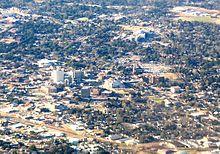
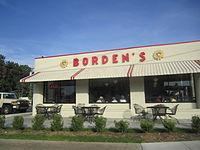
Lafayette serves as the retail hub of the five parish Acadiana area.
Downtown Lafayette
Northgate Mall
The Mall of Acadiana
The Villages of River Ranch
Other stores located in Lafayette include: Academy Sports and Outdoors, Kohl's and Plato aos Closet.
Lafayette has some manufacturing and fabrication businesses, including:
The city also has an IT community including such businesses as:
Cultural organizations include the Acadiana Symphony Orchestra and Conservatory of Music, Chorale Acadienne, Lafayette Ballet Theatre and Dance Conservatory, and Performing Arts Society of Acadiana.
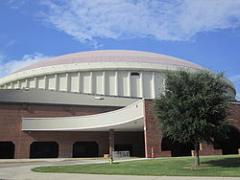
Lafayette is home to the Louisiana aeLafayette Ragin' Cajuns, the athletic teams of The University of Louisiana at Lafayette. It is home to the Louisiana Hurricanes, a semi-pro football team that plays at STM Stadium. Between the years of 1995 and 2005, Lafayette was home to the Louisiana IceGators ECHL hockey team; in 2009, the IceGators returned as a member of the Southern Professional Hockey League. As of 2009, Lafayette is home to the Lafayette Wildcatters of the Southern Indoor Football League. It is also home to the Lafayette Bayou Bulls, a semi-pro football program that started in 2003. Lafayette is home to three sports venues: the Cajundome, Cajun Field and Blackham Coliseum.
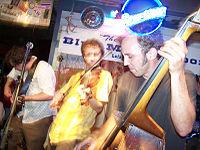
On weekend nights, Downtown Lafayette turns into a nightlife hub in the Acadiana region. Downtown Lafayette offers a diverse range of dance clubs and sports bars, including iconic live music venue tourist destinations such as Grant Street Dancehall and The Blue Moon Saloon. Outside of the downtown area, other establishments are found. Those along the McKinley Street Strip historically catered to a university crowd within walking distance. Other venues and establishments are found dispersed along Johnston Street, in and around River Ranch, along Ambassador Caffery, the Simcoe Street Strip and also a scattered collection of neighborhood dives and watering holes. There are many drive-through daiquiri shops aefrom roadside stands to establishments large enough to have live entertainment. Louisiana state law decrees that these containers are considered a "closed container" so long as they have tape across the flap to ensure that drinking and driving does not occur.
Local musicians and bands include: Cedric Watson, Pine Leaf Boys, Steve Riley and the Mamou Playboys and The Lost Bayou Ramblers
Also, see list of people related to Cajun music.
Currently, Lafayette is served by Cox Communications, as well as Lafayette Utilities System's LUSFiber fiber optic network.
Lafayette is home to:
Lafayette is also served by:
See List of Lafayette radio stations for full list.
Popular radio stations in Lafayette:
Other:
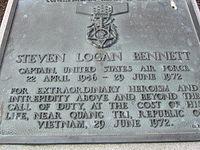
Lafayette is the heart of Acadiana and the center of Cajun culture in Louisiana and the United States. As such, Lafayette has many cultural places of interest.
Lafayette has six sister cities:
Six intersections in the downtown area are each named after one of its sister cities.
Word Count: 3090






